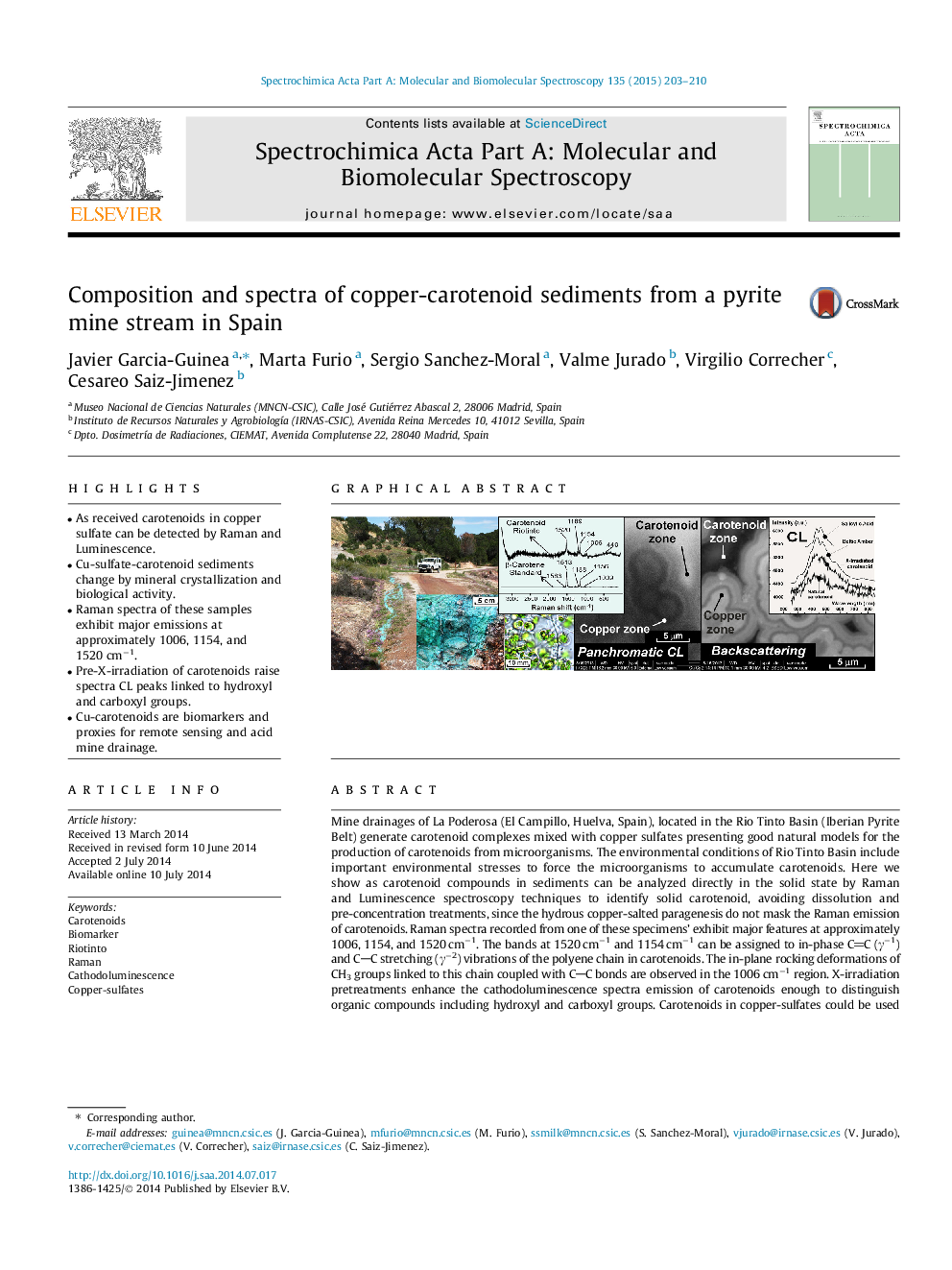| کد مقاله | کد نشریه | سال انتشار | مقاله انگلیسی | نسخه تمام متن |
|---|---|---|---|---|
| 1233182 | 1495233 | 2015 | 8 صفحه PDF | دانلود رایگان |
• As received carotenoids in copper sulfate can be detected by Raman and Luminescence.
• Cu-sulfate-carotenoid sediments change by mineral crystallization and biological activity.
• Raman spectra of these samples exhibit major emissions at approximately 1006, 1154, and 1520 cm−1.
• Pre-X-irradiation of carotenoids raise spectra CL peaks linked to hydroxyl and carboxyl groups.
• Cu-carotenoids are biomarkers and proxies for remote sensing and acid mine drainage.
Mine drainages of La Poderosa (El Campillo, Huelva, Spain), located in the Rio Tinto Basin (Iberian Pyrite Belt) generate carotenoid complexes mixed with copper sulfates presenting good natural models for the production of carotenoids from microorganisms. The environmental conditions of Rio Tinto Basin include important environmental stresses to force the microorganisms to accumulate carotenoids. Here we show as carotenoid compounds in sediments can be analyzed directly in the solid state by Raman and Luminescence spectroscopy techniques to identify solid carotenoid, avoiding dissolution and pre-concentration treatments, since the hydrous copper-salted paragenesis do not mask the Raman emission of carotenoids. Raman spectra recorded from one of these specimens’ exhibit major features at approximately 1006, 1154, and 1520 cm−1. The bands at 1520 cm−1 and 1154 cm−1 can be assigned to in-phase CC (γ−1) and CC stretching (γ−2) vibrations of the polyene chain in carotenoids. The in-plane rocking deformations of CH3 groups linked to this chain coupled with CC bonds are observed in the 1006 cm−1 region. X-irradiation pretreatments enhance the cathodoluminescence spectra emission of carotenoids enough to distinguish organic compounds including hydroxyl and carboxyl groups. Carotenoids in copper-sulfates could be used as biomarkers and useful proxies for understanding remote mineral formations as well as for terrestrial environmental investigations related to mine drainage contamination including biological activity and photo-oxidation processes.
Figure optionsDownload as PowerPoint slide
Journal: Spectrochimica Acta Part A: Molecular and Biomolecular Spectroscopy - Volume 135, 25 January 2015, Pages 203–210
